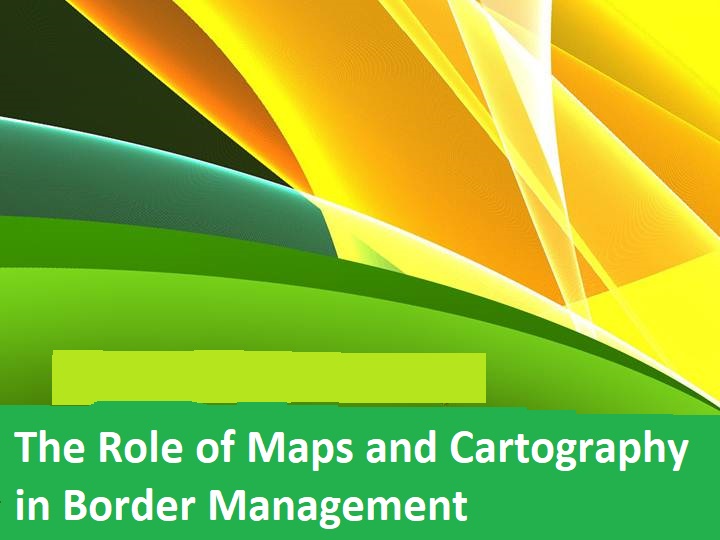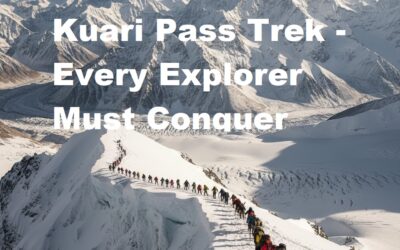The Role of Maps and Cartography in Border Management
Maps and cartography have played a significant role in border management throughout history. Border management involves the identification and monitoring of international boundaries to ensure that they are secure and that they facilitate the flow of legitimate trade and people. Today, Maps and cartography provide crucial tools for border management by accurately defining the boundaries and enabling effective monitoring and surveillance.
Maps and cartography have played a crucial role in human history, from ancient maps used for trade and exploration to modern maps used for navigation and environmental management. It have been an integral part of human history for centuries, serving as tools for exploration, navigation, and documentation.
From ancient maps etched in clay tablets to modern digital maps, cartography has evolved to become both an art and a science. In this article, we will explore the history of maps and cartography, the different types of maps, and how cartographers use technology to create accurate and detailed maps.
History of Maps and Cartography
The earliest known maps date back to ancient civilizations in Mesopotamia, Egypt, and China.
These maps were created to document boundaries, trade routes, and geographical features such as rivers and mountains.
The earliest known world map is the Babylonian Map of the World, which was created around 600 BCE.
During the Age of Exploration in the 15th and 16th centuries, maps became increasingly important as tools for navigation.
Cartographers such as Gerardus Mercator created maps that accurately depicted the world’s coastlines, making it easier for sailors to navigate.
Maps also played a role in colonization, as European nations used maps to claim new territories and establish trade routes.
In the 20th century, the development of aerial photography and satellite imagery revolutionized cartography.
Cartographers could now create maps with unprecedented accuracy and detail, and maps became even more important in fields such as military strategy,
urban planning, and environmental management.
Role In Border Management
Maps and cartography play an integral role in border management across the world.
Border management is crucial for ensuring the safety and security of a country and its citizens.
It involves the implementation of various measures to control and monitor the movement of people, goods, and services across the border.
Maps and cartography are essential tools in border management as they help in creating accurate geographical boundaries and monitoring them
effectively.
Cartography: Role In Border Management
Cartography is the art and science of creating maps, and it plays a crucial role in border management.
Cartographers use a range of tools and techniques to create maps that accurately depict the geography of a particular area.
These maps provide an accurate representation of the borders, which is crucial in border management.
By creating maps that accurately depict the borders, cartographers enable border management officials to monitor the movement of people, goods, and
services across the border effectively.
Maps: Visual Representation Of The Geography
Maps are also essential in border management as they provide a visual representation of the geography of a particular area.
This allows border management officials to identify areas that are vulnerable to illegal border crossings.
Further, they can take appropriate measures to address these issues.
By using maps, border management officials can create a comprehensive plan to secure the border and prevent illegal border crossings.
Management Of Natural Borders
In addition to this, maps and cartography also play a crucial role in the management of natural borders such as rivers, mountains, and deserts.
These natural borders are often difficult to manage as they can be vast and challenging to navigate.
Cartographers create detailed maps of these areas, which allow border management officials to monitor them effectively.
By using these maps, border management officials can identify potential areas of illegal border crossings and take measures to address these issues.
Creation Of Border Control Systems
Another important aspect of maps and cartography in border management is their use in the creation of border control systems.
These systems use maps and geographical data to monitor and control the movement of people, goods, and services across the border.
By using these systems, border management officials can track the movement of people and goods.
This helps in preventing illegal activities such as smuggling and trafficking.
Use Of Digital Mapping Technology
The use of digital mapping technology has also revolutionized the way border management is conducted.
Digital maps and geographic information systems (GIS) are used to create interactive maps.
Such maps allow border management officials to monitor the movement of people, goods, and services across the border in real-time.
These systems provide accurate and up-to-date information about the border, which helps in ensuring the safety and security of the country.
International Cooperation and Collaboration
Furthermore, the use of maps and cartography in border management also helps in international cooperation and collaboration.
Countries often share maps and geographical data to ensure that borders are accurately defined and monitored.
This sharing of information helps in preventing conflicts and misunderstandings between countries.
Types of Maps
There are many different types of maps, each designed for a specific purpose. Here are some of the most common types of maps:
Political maps:
Political maps show national and regional boundaries, as well as cities and major landmarks.
These maps are often used in politics, diplomacy, and education.
Physical maps:
Physical maps show natural features such as mountains, rivers, and lakes. These maps are often used in geography, geology, and environmental studies.
Topographic maps:
Topographic maps show the elevation and shape of the land’s surface.
These maps are often used in hiking, mountaineering, and surveying.
Road maps:
Road maps show highways, streets, and other transportation routes.
These maps are often used for navigation and travel planning.
Climate maps:
Climate maps show the weather patterns and climate zones of a particular region.
These maps are often used in meteorology and agriculture.
How Cartographers Use Technology to Create Maps
In the past, cartographers used manual methods such as drawing and engraving to create maps.
Today, cartographers use a combination of technology and manual techniques to create accurate and detailed maps.
One of the most important tools used by cartographers is Geographic Information Systems (GIS).
GIS allows cartographers to collect and analyze data about the Earth’s surface, such as elevation, land cover, and population density.
This data can then be used to create maps that are both accurate and informative.
Another important tool used by cartographers is remote sensing.
Remote sensing involves using satellites and other sensors to gather data about the Earth’s surface.
This data can then be used to create maps with unprecedented detail and accuracy.
Cartographers also use software such as Adobe Illustrator and AutoCAD to create digital maps.
These programs allow cartographers to create maps that are not only accurate but also visually appealing.
Maps and Cartography with India’s International Boundary
India is a large country located in South Asia, and it shares its borders with several neighboring countries.
India has a total of 14 international land borders, making it one of the most bordered countries in the world.
Here is a list of India’s international boundaries:
Pakistan:
India shares a 3,323-kilometer-long border with Pakistan, which is the longest international boundary of India.
The border is known as the Line of Control (LoC) in Jammu and Kashmir, which is a disputed territory between the two countries.
China:
India shares a 3,488-kilometer-long border with China, which is the second-longest international boundary of India.
The border is known as the Line of Actual Control (LAC) and is also a disputed territory between the two countries.
Nepal:
India shares a 1,751-kilometer-long border with Nepal, which is the third-longest international boundary of India.
The border is open and is one of the busiest international borders of India.
Bhutan:
India shares a 699-kilometer-long border with Bhutan, which is the fourth-longest international boundary of India.
The border is open, and India has close ties with Bhutan in terms of security and trade.
Bangladesh:
India shares a 4,096-kilometer-long border with Bangladesh, which is the fifth-longest international boundary of India.
The border is known as the Radcliffe Line and was created during the partition of India in 1947.
Myanmar:
India shares a 1,643-kilometer-long border with Myanmar, which is the sixth-longest international boundary of India.
The border is known as the Indo-Myanmar border, and it is also called the “Golden Triangle” due to the region’s illegal drug trade.
Afghanistan:
India shares a 106-kilometer-long border with Afghanistan, which is the seventh international boundary of India.
The border is known as the Wakhan Corridor, and it is a remote and inaccessible region.
Sri Lanka:
India shares a 30-kilometer-long maritime boundary with Sri Lanka, which is the eighth international boundary of India.
The boundary is in the Palk Strait and the Gulf of Mannar.
Maldives:

Maldives Sea Beach
India shares a 672.3-kilometer-long maritime boundary with the Maldives, which is the ninth international boundary of India.
The boundary is in the Arabian Sea and the Indian Ocean.
Indonesia:
India shares a maritime boundary with Indonesia in the Andaman Sea and the Bay of Bengal.
Thailand:
India shares a maritime boundary with Thailand in the Andaman Sea.
Oman:
India shares a maritime boundary with Oman in the Arabian Sea.
Yemen:
India shares a maritime boundary with Yemen in the Arabian Sea.
United Arab Emirates:
India shares a maritime boundary with the United Arab Emirates in the Arabian Sea.
Resolving India’s Border Disputes With Neighboring Countries
Maps and cartography can play a crucial role in resolving India’s border disputes with neighboring countries.
Here are some ways in which they can be used:
Establishing territorial claims:
Maps can help to establish a country’s territorial claims by clearly demarcating its borders.
In India’s case, for example, maps can be used to show the disputed territories and the areas that India considers to be its own.
This can provide a starting point for negotiations with neighboring countries.
Providing evidence:
Cartographic evidence can be used to support India’s claims in negotiations with other countries.
This can include historical maps, official maps, and satellite imagery.
Therefore, such evidence can help to establish India’s right to certain territories and can be used to rebut claims made by other countries.
Resolving boundary disputes:
Maps can be used to help resolve boundary disputes by clearly defining the boundaries between India and its neighboring countries.
This can involve the use of detailed topographic maps.
Moreover, It can show natural boundaries such as rivers, mountains, and valleys, as well as man-made features such as roads and buildings.
Facilitating diplomatic talks:
Maps and cartography can also play a crucial role in facilitating diplomatic talks between India and its neighboring countries.
Therefore, by providing a clear and accurate depiction of the disputed territories and the surrounding areas, maps can help to clarify the issues at stake
and can help to find a mutually acceptable solution.
Conclusion:
Overall, Maps and cartography have played a crucial role in human history.
From ancient maps used for trade and exploration to modern maps used for navigation and environmental management.
The art and science of mapmaking has evolved over time, from hand-drawn maps to digital maps created using GIS and remote sensing technology.
As we continue to explore and document our world, cartography will undoubtedly continue to play an important role.
Cartographers use sophisticated techniques to create maps that show the geographical features and physical boundaries of the border areas, and these
maps are used to plan and execute border management activities such as surveillance and patrols.
Furthermore, advances in technology have enabled the creation of real-time mapping and monitoring systems that provide accurate and timely information
on border activities.
It will also delve into the challenges and limitations of these techniques and the future of border management in a rapidly changing world.
On the other hand, India shares its borders with several neighboring countries, and the international boundaries of India are an important aspect of the
country’s geography and international relations.





0 Comments